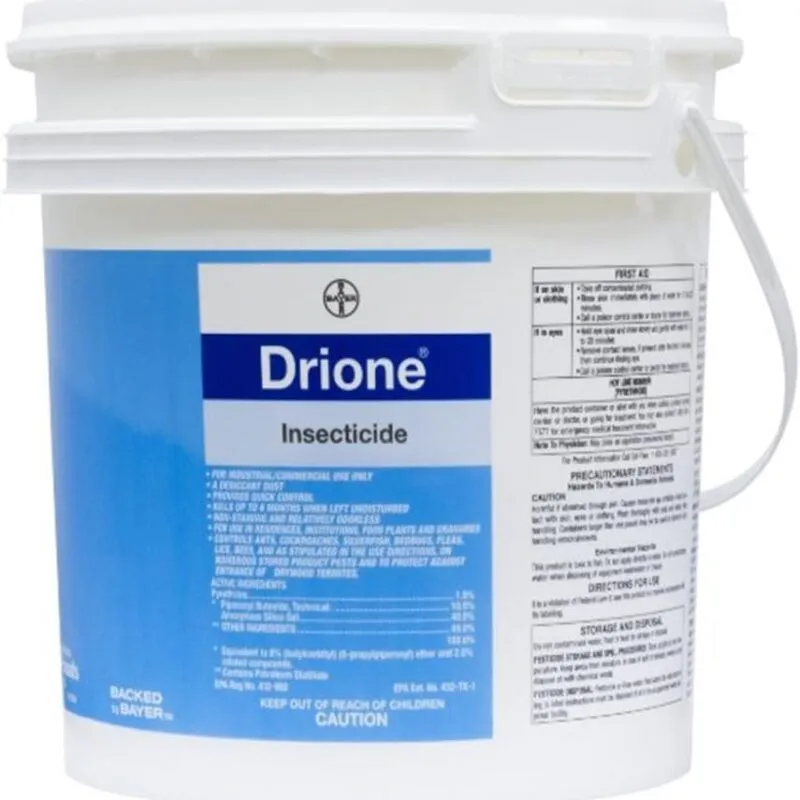Discovering small, round holes in your wooden deck or pergola can be frustrating. These are often signs of carpenter bees, insects that, while beneficial pollinators, can cause significant damage to your wooden structures. If you’re looking for a reliable solution, you may have come across Drione Dust, a popular insecticide for tackling these pests. But does it really work? In this article, we’ll explore the effectiveness of Drione Dust against carpenter bees and help you determine if it’s the right choice for your home.
What is Drione Dust?
Drione Dust is a desiccant dust insecticide composed primarily of pyrethrins, a botanical insecticide derived from chrysanthemum flowers, along with silica gel and piperonyl butoxide. The combination of these ingredients allows Drione Dust to act quickly, dehydrating insects by absorbing their waxy outer coating, leading to their eventual death.
How Does Drione Dust Work?
When applied to carpenter bee nesting sites, the dust gets into the bees’ tunnels and comes into contact with the insects. The silica gel in Drione Dust works by desiccating the bees, while the pyrethrins act as a neurotoxin, providing a one-two punch that effectively eliminates them.
Effectiveness of Drione Dust Against Carpenter Bees
Pros:
- Fast-Acting: Drione Dust provides quick results, often killing bees within hours of contact.
- Residual Effect: It continues to work for several months, ensuring that any returning bees or new invaders are dealt with promptly.
- Penetration: The fine dust penetrates deep into the bee tunnels, reaching areas that sprays or liquid insecticides might miss.
Cons:
- Application Challenges: Proper application requires some precision. Incorrect usage might lead to less effective results.
- Safety Concerns: While effective, Drione Dust is a chemical insecticide and should be used with caution, particularly around children and pets.
- Environmental Impact: As with all insecticides, there is a potential impact on non-target insects and the broader environment.
How to Use Drione Dust for Carpenter Bees
Preparation:
- Identify Infestation Sites: Look for the characteristic round holes made by carpenter bees in wood.
- Safety Gear: Wear gloves, a mask, and safety goggles to protect yourself from inhaling the dust.
Application Steps:
- Dust Application: Using a duster or bulb applicator, carefully apply Drione Dust into the holes. Ensure you dust the entire tunnel system to maximize effectiveness.
- Seal the Holes: After 24-48 hours, seal the entrance holes with wood putty or caulk to prevent future infestations. This also traps any bees that might not have come into contact with the dust.
- Repeat if Necessary: Monitor the area and reapply if you notice new activity.
Safety Precautions
- Avoid Inhalation: Drione Dust can be harmful if inhaled, so always wear a mask and apply it in well-ventilated areas.
- Keep Away from Non-Target Areas: Avoid applying the dust in areas where children, pets, or beneficial insects frequent.
- Storage: Store the dust in a cool, dry place away from food and out of reach of children and pets.
Alternatives to Drione Dust
While Drione Dust is effective, there are alternative methods to consider:
- Wooden Carpenter Bee Traps: These traps are eco-friendly and specifically designed to attract and trap carpenter bees without chemicals.
- Natural Repellents: Essential oils like citrus or almond oil can deter bees when applied to wood surfaces.
- Preventive Measures: Painting or varnishing exposed wood can make it less attractive to carpenter bees, reducing the likelihood of infestation.
Long-Term Prevention Tips
- Regular Inspections: Check wooden structures periodically for signs of carpenter bee activity.
- Paint and Seal: Keep wood surfaces painted or sealed to make them less appealing to carpenter bees.
- Fill Old Holes: Carpenter bees often return to old nesting sites, so make sure to fill any holes you find.
Final Toughts
Drione Dust is a powerful tool in the fight against carpenter bees, offering quick and effective results. However, it requires careful application and consideration of safety and environmental impacts. For those seeking chemical-free solutions, wooden traps and preventive measures offer viable alternatives. By understanding the pros and cons of each method, you can choose the best approach to protect your home from these wood-boring pests.
FAQs
1. How long does Drione Dust remain effective?
Drione Dust can remain effective for several months, providing long-term protection against carpenter bees.
2. Is Drione Dust safe for use around pets and children?
While Drione Dust is effective, it should be used with caution. Avoid applying it in areas where pets and children frequent, and always store it safely.
3. Can I use Drione Dust indoors?
Drione Dust is typically used outdoors for carpenter bee control, but it can be used indoors for other pests. Ensure proper ventilation and safety measures if used inside.
4. How often should I reapply Drione Dust?
Monitor the treated areas and reapply as needed, particularly if you notice new carpenter bee activity.
5. Are there any natural alternatives to Drione Dust?
Yes, wooden carpenter bee traps, essential oils, and preventive measures like painting and sealing wood are effective natural alternatives.

